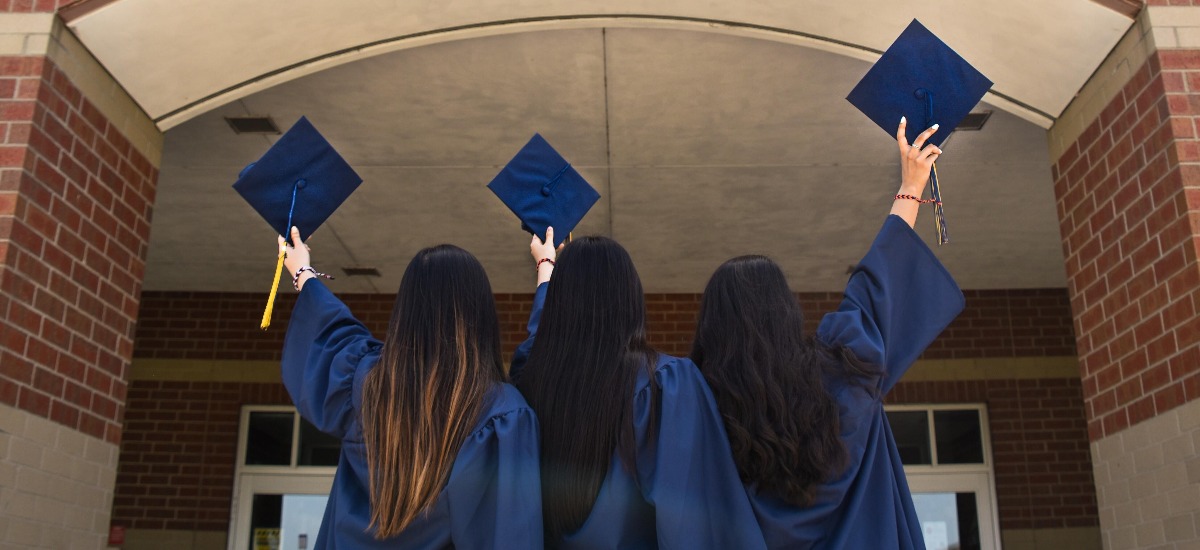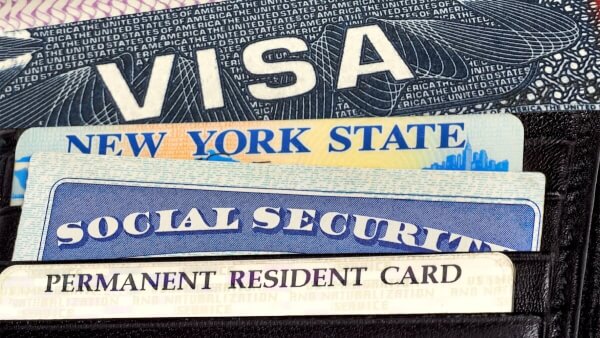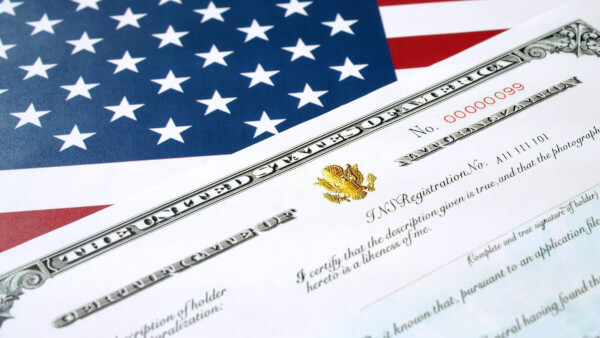Transferring your international driver's license to the US: step-by-step
Your full guide to updating your foreign driver's license to the US.

Studying in the US is a dream for many. Not only will you be able to learn at a range of world class institutions, living abroad means a wealth of opportunities to experience a different culture, travel and make new friends from around the world.
Most students arriving in the US from abroad have either an F1 or M1 visa class. This guide runs through your F1 student visa options, including F1 visa rules, eligibility, application process and costs.
And to help you manage your money while overseas, we’ll also touch on Wise. Open a Wise multi-currency Account before you head to the US, to receive payments like a local and cut the costs of currency exchange.
| 📑 Table of Contents |
|---|
The F1 visa is a non-immigrant visa type for students who are undertaking academic studies or language courses at eligible institutions¹. The types of institutions which may be accepted as part of an application for an F1 visa include:
The institution must be offering some form of qualification at the end of your course — a diploma or certificate for example — and will need to be authorized by the US government to take in international students.
If you’re successful in applying for your F1 visa you’ll be able to live and study in the US at your preferred institution — but it’s important to note your options for working are somewhat limited. That means you’ll need to be able to demonstrate that you have the funds to pay for your stay in the US prior to arriving. We’ll cover this in more detail later.
To apply for the F1 visa type you’ll need to fulfil the following eligibility requirements:
The M1 visa has slightly different eligibility requirements — notably that it is issued to students on vocational courses. If you’re not eligible to apply for an F1 visa class, the M1 may better suit your needs.
If you hold a student visa F1 type, you can not work off campus during your first academic year. It may, however, be possible to work in certain on campus roles.
From the end of your first academic year, you’re allowed to work in the following types of role²:
If you’re interested in working for an employer under the OPT programs you’ll need to have your school recommend a placement, and apply for employment authorization on your behalf. The STEM employment option is available only to students taking degrees in STEM subjects.
It’s worth noting that students holding an F1 visa may be permitted to work under special circumstances on a case by case basis. This may apply if the student is in severe economic hardship for example. These cases would be looked at on individual merit via the academic institution.
The length of your F1 visa will depend on the length of your study course. You’re expected to leave the US within 60 days of your course ending.
You may be able to extend your F1 visa from within the US³, or else renew your visa if you have left the country and are processing your application via your local embassy.
If you’re in the US and want to extend your stay you must do so 45 days before your existing visa expires. Otherwise you risk overstaying which can mean you’re fined or even deported. To extend your visa without leaving the country you need to file Form I-539⁴, which can be done online. Visit the USCIS website to find the paperwork and learn more about the process of extending your non immigrant status.
If you are not in the US, you can apply to renew your visa using the DS-160 form and the same process as we have laid out below for initial applications.

Here are the primary steps you’ll need to take to apply for your F1 visa, assuming you’re not yet in the US⁵:
The standard documents you’ll need to take along to your visa interview include:
In addition to this you may need other paperwork based on your nationality, specific application or the course you’re attending. This may include:
You’ll be able to see the expected wait time before your interview on the Department of State website. There you can search by Embassy location to see when your interview will likely be scheduled. Once you have your interview date you’ll meet with a consular officer to establish whether or not you’re eligible for the F1 visa. The consular officer may request further information or evidence in addition to the documents outlined above.
You’ll need to give fingerprints during the interview, and will be informed of the decision afterwards. The exact process may vary depending on the location of the Embassy you visit — check out the details for your country online.
If you’re applying for a new F1 visa, you should submit your application up to 120 days prior to the start date of the course you want to attend. If you’re applying for an extension and are already studying at an approved school, you can do so at any time.
If you’re applying for your F1 visa from outside of the US, the wait time will depend on the embassy in which you file your application. In some cases, you’ll hear very quickly - within a few days. But depending on the circumstances it may take longer. Your embassy will be able to advise you on the likely wait times - it’s best not to book travel until you know your visa has been approved.
For F1 visa extensions from within the US, you’re advised to get your application in at least 45 days before your existing visa expires to avoid an overstay.
If you’re applying for your F1 visa from outside of the US using Form DS-160, the fee is 160 USD⁷. There are also additional costs for registering with SEVIS of 350 USD⁸ — and you may need to pay to have your visa and passport returned to you once it is approved. This cost can vary depending on where you have applied for your F1 visa.
From within the US, using the I-539 form you’ll need to pay a fee of 370 USD, plus 85 USD for biometrics.
| 💡 If you’re paying for your F1 visa from an account outside of the US, you can save money with Wise. International payments with Wise are arranged online and use the real mid-market exchange rate with no markups and no hidden fees. That can be much cheaper than sending a wire using your regular bank. |
|---|
The Wise multi-currency Account is also a smart way to cut costs, and hit the ground running once you arrive stateside. More on that later.
You can apply for your spouse and unmarried minor children to come to the US with you on F2 visas. You’ll need to complete an application process for each family member you want to bring with you, and your school will need to issue you with additional I-120 forms for family members. There is not an additional fee for the I-120 in this case.
Children coming with you are allowed to attend school in the US during your period of study. Applications from same sex and opposite gender couples are treated equally.
Once your visa application has been submitted you can check the case status using the handy tool on the USCIS website. Just enter your case number to get a live update.
The F1 visa is conditional on you being enrolled in an eligible study course. So what happens if you want to stay in the US once you’ve graduated?
One option is to look to move from a temporary visa to a permanent resident status by applying for a Green Card.
Becoming a permanent resident means you don’t need to renew or extend your visa, or apply for different permissions if your job changes. You’d be free to stay in the US indefinitely — and although it’s not the same as being a US citizen, it is a step on the road if you’re interested in naturalizing as a US citizen in future.
There are a number of different eligibility categories under which you may apply for a Green Card, which mainly require you to have a sponsor who is already a US citizen. This may be a family member or spouse for example.
If you’re eligible to apply for permanent resident status, you’ll need to take the following basic steps:
It’s important to know that annual caps on the numbers of Green Cards issued across most categories mean you may be in for a lengthy wait before your application is processed.
The exception here is if you’re applying as an immediate family member of a US citizen. This category does not have annual caps and therefore tends to move more quickly than other routes.
| 💡 Want to know more? Check out these handy articles on the topic: |
|---|
Being able to study in the US is a fantastic opportunity. But it’s not cheap.
Send money online with Wise when you need to send international payments, to access currency conversion which uses the real exchange rate with no sneaky hidden fees.
Once you arrive in the US, you’ll need a USD bank account to be able to set up essential services like internet and a cell phone, as well as for paying for day to day life.
Open a Wise multi-currency Account before you travel, to get your own USD bank account details and a linked debit card for simple spending. Just top up your account, switch to USD using the mid-market exchange rate, and you can spend your dollars with no extra fees using your card. It’s simple — and it saves you money.
🚀 Start saving on your payments
Studying abroad is a great adventure — and an investment in your future. Getting the visa paperwork sorted can be a headache but the experience you have will make it all worthwhile. Good luck preparing your F1 visa application — and don’t forget to check out the Wise multi-currency Account as a smart way to manage your money once you’re overseas.
Sources:
Sources checked on 06.17.2021
*Please see terms of use and product availability for your region or visit Wise fees and pricing for the most up to date pricing and fee information.
This publication is provided for general information purposes and does not constitute legal, tax or other professional advice from Wise Payments Limited or its subsidiaries and its affiliates, and it is not intended as a substitute for obtaining advice from a financial advisor or any other professional.
We make no representations, warranties or guarantees, whether expressed or implied, that the content in the publication is accurate, complete or up to date.

Your full guide to updating your foreign driver's license to the US.

Whatever your reason is for moving to the US, this guide aims to help you figure out the most important costs you'll face when you live there.

Find all you need to know about getting a personal loan for H-1B visa holders in this guide.

Everything you need to know about the US certificate of naturalization.

The US welcomes large numbers of new arrivals every year — and getting a great job to both gain experience and set down roots is a core part of the American...

Find everything you need to know about the US citizenship test, including the USCIS questions and answers.